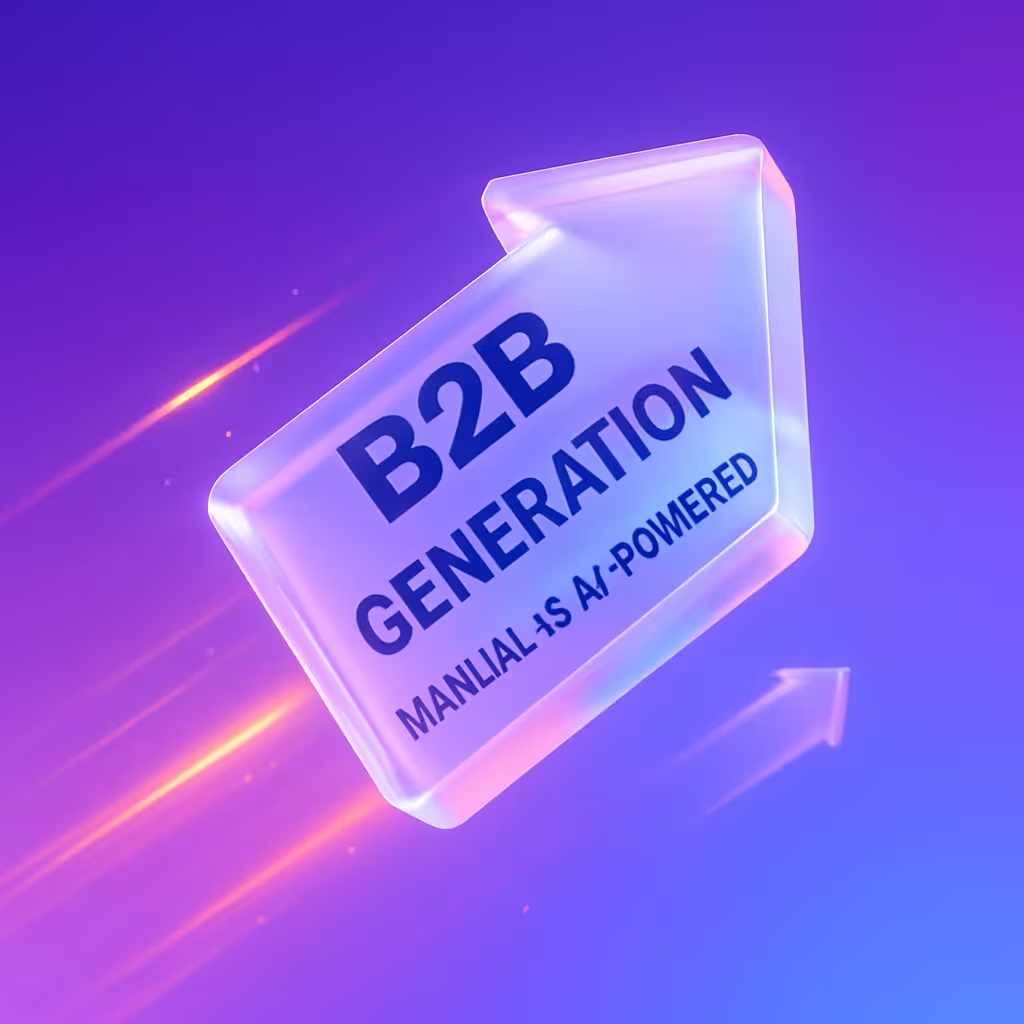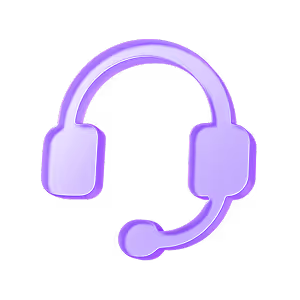Want to generate more B2B leads but unsure whether to go manual or AI-powered? Here’s what you need to know.
- Manual methods (e.g., LinkedIn Sales Navigator, cold calling) offer a personal touch but are time-intensive and hard to scale.
- AI-powered tools (e.g., ZoomInfo, Apollo.io) automate lead discovery, scale personalization, and analyze data faster but require upfront investment.
- Both approaches have pros and cons, and the right choice depends on your business size, lead volume, and budget.
Quick Comparison:
| Aspect | Manual Methods | AI-Powered Methods |
|---|---|---|
| Process Speed | Slow, human-driven | Fast, automated |
| Scalability | Limited by team size | Easily scalable |
| Personalization | High but labor-intensive | Data-driven and scalable |
| Cost | Low upfront, high ongoing labor costs | High upfront, lower long-term costs |
| Data Insights | Limited | Advanced, predictive analytics |
For small businesses, manual methods may suffice. Larger operations benefit from AI tools for efficiency and scale. A hybrid approach - using AI for lead sourcing and manual efforts for nurturing high-value prospects - often works best.
Seamless AI vs ZoomInfo: Which is The Best Lead Generation Software?
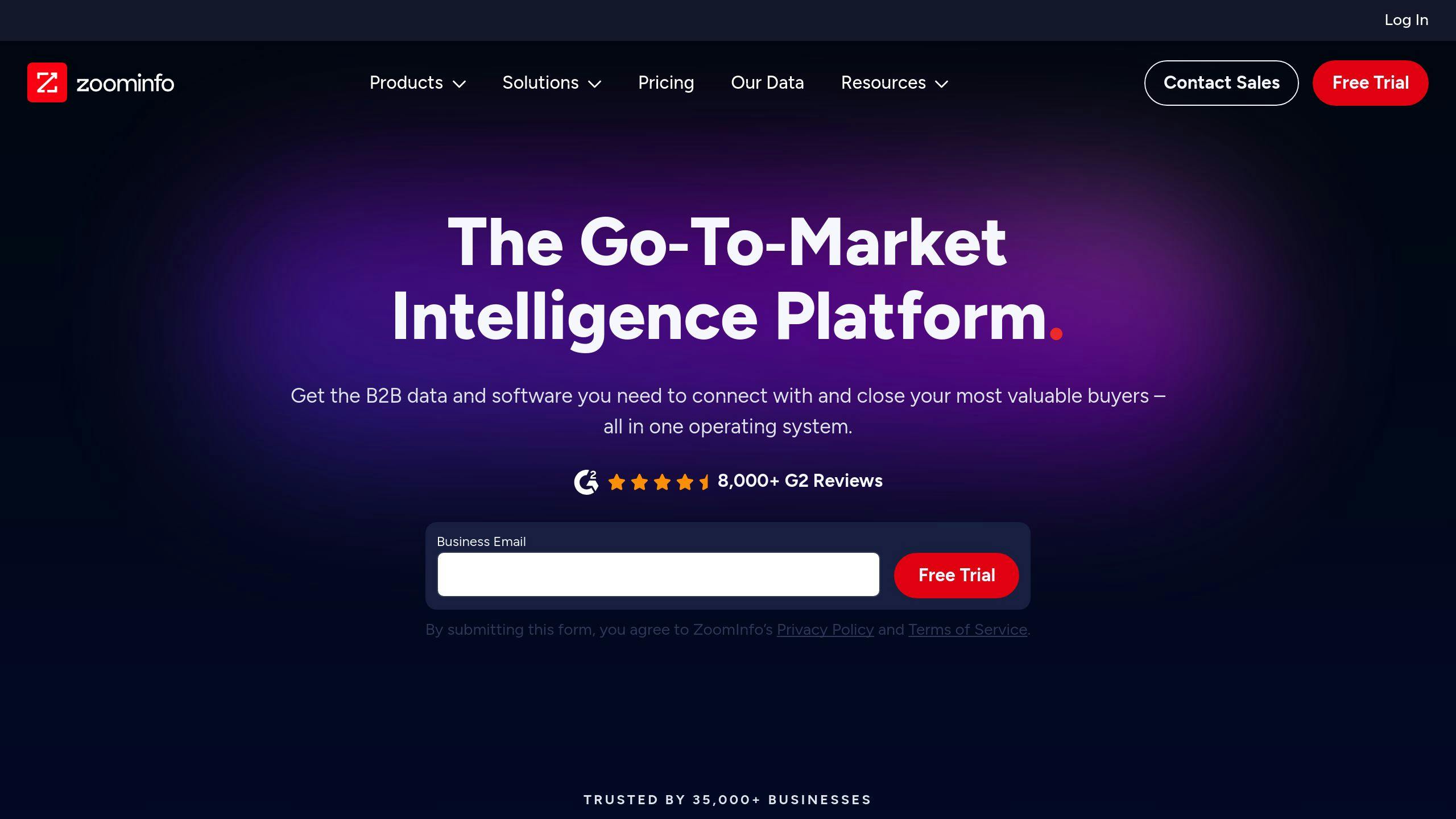
Manual Methods for B2B Lead Generation
Manual lead generation continues to be a key strategy for many B2B companies, relying on human expertise and direct interaction. Although it takes more time compared to AI-driven methods, it often provides a more tailored approach.
Using LinkedIn Sales Navigator for Lead Research
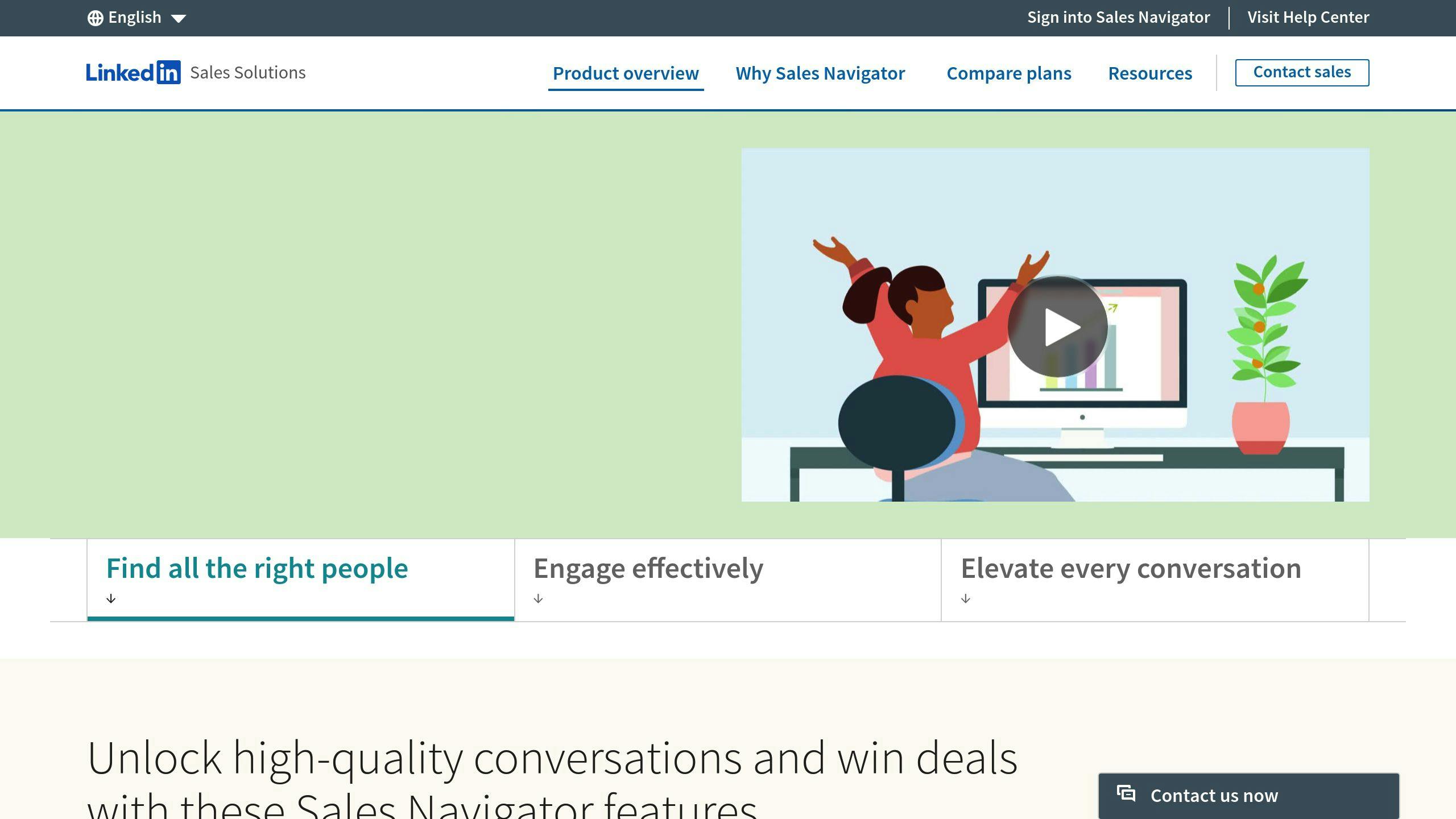
LinkedIn Sales Navigator is a standout tool for manual lead generation. Its advanced search features let sales teams filter prospects based on criteria like industry, company size, job roles, and location [3].
For example, Hyland Software cut their sales process time by 60% by leveraging Sales Navigator effectively [3]. The platform offers advanced filters for precise targeting, direct communication through InMail, and real-time insights into leads. This makes it easier for sales teams to find and connect with high-quality prospects.
Cold Calling and Direct Mail Campaigns
Traditional methods like cold calling and direct mail campaigns still hold value in certain B2B scenarios. These approaches work particularly well for:
- High-value accounts requiring a personal touch
- Industries that favor traditional communication methods
- Markets where digital channels are oversaturated
These methods can complement digital strategies like LinkedIn Sales Navigator but require careful planning and integration with other lead generation efforts to achieve the best results [5].
Challenges of Manual Lead Generation
Manual lead generation comes with its own set of hurdles:
- Maintaining Quality at Scale: Ensuring consistent lead quality becomes harder as teams grow.
- Scaling Personalization: Crafting personalized outreach for many leads is tough without tech support [1].
To make manual methods more effective, businesses should prioritize precise targeting and take full advantage of tools like LinkedIn Sales Navigator. Combining these tools with personalized outreach can help address some of the challenges while keeping the human element that’s often crucial in B2B relationships [3][6].
Though manual methods shine in delivering tailored results for targeted campaigns, they often can’t match the speed and scalability of AI-driven approaches, which we’ll cover next.
AI-Powered Methods for B2B Lead Generation
AI tools have changed the game for B2B lead generation. They help businesses find, connect with, and convert leads more effectively, eliminating the bottlenecks of manual processes while keeping interactions personal.
Features of Overloop AI
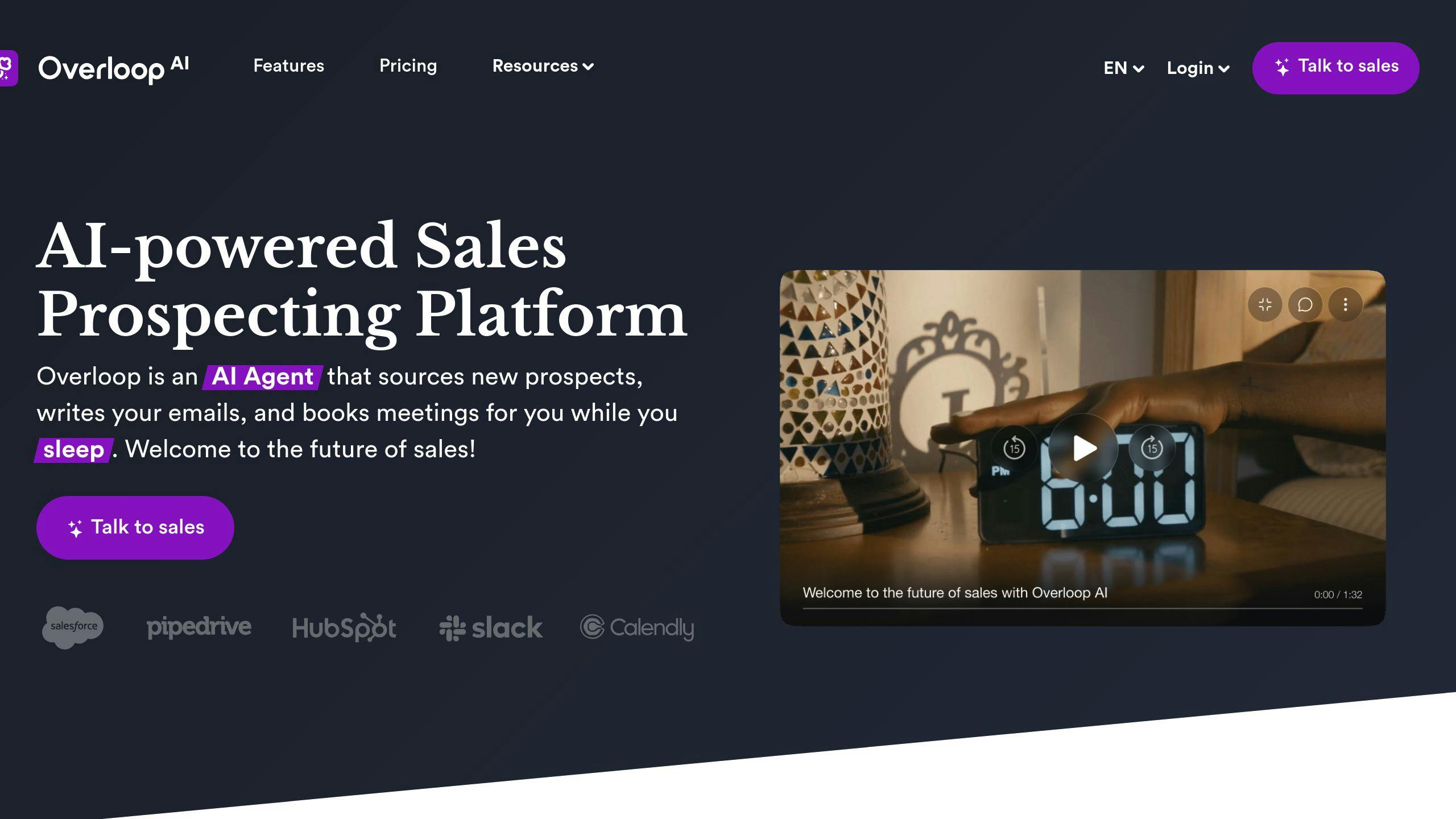
Overloop AI is a great example of how AI simplifies lead generation. It offers:
- Support for over 80 languages
- AI-crafted personalized email campaigns
- Automated workflows for lead discovery and follow-ups
By combining automated list building with intelligent campaign management, Overloop AI makes lead generation faster and more efficient without losing the personal touch.
Capabilities of ZoomInfo and Apollo.io
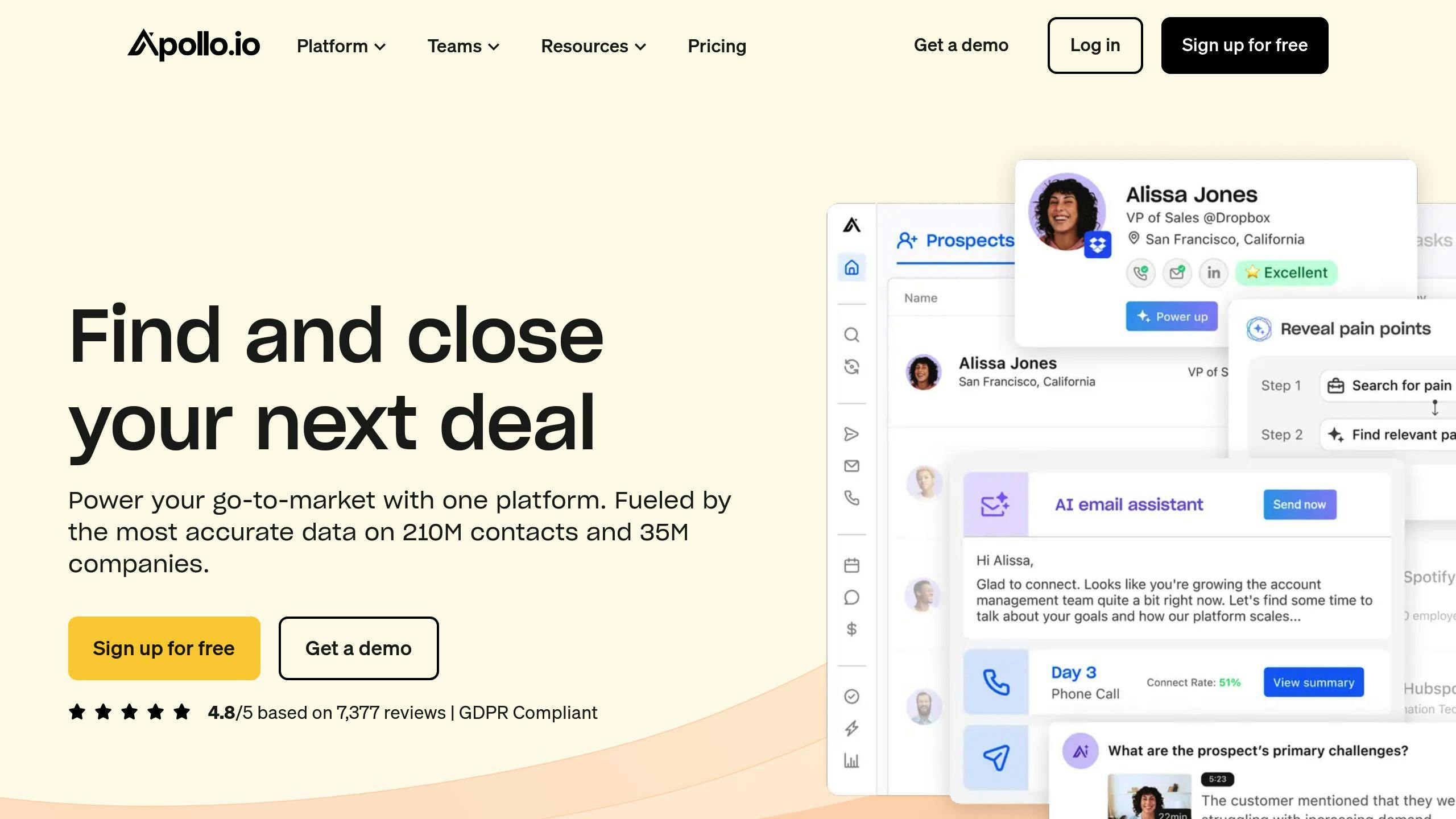
ZoomInfo and Apollo.io are two standout platforms that push the boundaries of AI-driven lead generation. Here's how they compare:
| Feature | ZoomInfo | Apollo.io |
|---|---|---|
| Lead Sourcing | Automated company discovery | Instant lead suggestions |
| Data Insights | Technology usage and intent data | Contact verification |
| Analytics | Detailed reporting | Engagement tracking |
How AI Improves Personalization and Efficiency
AI enhances lead generation in several ways:
Smarter Data Analysis: AI tools process large datasets to uncover customer behavior trends, helping businesses target leads more effectively.
Scalable Personalization: These tools create customized content based on individual prospect data, enabling businesses to scale outreach while keeping it relevant.
Seamless Integrations: Solutions like LeadIQ integrate with CRM systems, ensuring smooth workflows and boosting team efficiency [2].
These advancements highlight how AI-powered methods outperform traditional approaches in terms of speed, scalability, and precision.
Comparing Manual and AI-Powered Lead Generation
When choosing a lead generation strategy, it's important to weigh the pros and cons of manual and AI-powered methods. Each has its own strengths, resource demands, and results to consider.
Strengths and Weaknesses of Each Approach
| Aspect | Manual Methods | AI-Powered Methods |
|---|---|---|
| Personalization | High personal touch, tailored outreach | Scalable personalization using data insights |
| Efficiency | Time-consuming, limited by human capacity | Automated, handles large volumes efficiently |
| Cost & Resources | Lower initial costs, higher ongoing labor expenses | Higher upfront cost, lower long-term expenses |
| Data Analysis | Limited by human capabilities | Advanced pattern recognition and predictions |
| Quality Control | Direct human oversight | Automated quality checks with minimal manual input |
Both approaches have clear advantages and drawbacks, and understanding these can help businesses decide which aligns best with their needs.
Effectiveness and Scalability of Both Methods
Manual methods shine when a personal touch is critical, but they struggle to scale. AI-powered tools, on the other hand, excel at handling large volumes efficiently. For example, Hyland Software reduced their sales process time by 60% after adopting AI tools [3]. This kind of automation allows businesses to manage thousands of leads without needing a proportional increase in resources.
A sales rep using manual methods can handle around 50-100 leads weekly, making it ideal for smaller-scale, relationship-driven efforts. In contrast, AI platforms can process thousands of leads in the same timeframe, making them a better fit for scaling operations.
Costs and Resource Requirements
The financial trade-offs between these methods are stark. Manual approaches have lower upfront costs but require continuous investment in labor and time. AI-powered solutions demand a larger initial spend on technology but reduce long-term operational costs through automation and improved efficiency.
Your choice ultimately depends on your goals and priorities - whether you value personal touch over scalability, or you're looking for cost savings in the long run. Each approach has a role to play, depending on your business strategy.
Conclusion: Deciding Between Manual and AI-Powered Methods
Key Differences at a Glance
Manual methods focus on building personal connections but can fall short when scaling up. On the other hand, AI-powered tools, like those leveraged by Hyland Software to slash sales time by 60% [3], offer unmatched efficiency and long-term cost advantages. While manual approaches involve lower upfront costs but higher ongoing labor expenses, AI solutions demand more initial investment but pay off with automation and increased productivity over time.
Knowing these differences can guide businesses toward the approach that best suits their needs.
How to Choose the Right Approach
When deciding on a lead generation strategy, take your business size and goals into account:
| Business Size | Suggested Strategy | Key Advantages |
|---|---|---|
| Small (<100 leads/month) | Manual | Personalized, budget-friendly |
| Medium (100-1000 leads/month) | Hybrid | Combines personalization with efficiency |
| Large (1000+ leads/month) | AI-powered | Scalable, data-driven insights |
A hybrid model often delivers the best results. For instance, using AI tools to handle initial lead identification and data enrichment while reserving manual efforts for nurturing high-value prospects can strike the right balance. This strategy has shown clear benefits - LinkedIn Sales Navigator users reported a 17% increase in win rates and a 42% growth in deal sizes [4].
To implement effectively:
- Introduce AI tools gradually into your workflows
- Train your team to use new technologies effectively
- Track metrics like lead quality and conversion rates
- Balance automation with personal touches
Ultimately, success hinges on how well you execute and optimize your chosen approach. Align your strategy with your sales goals, resources, and team capabilities to make the most of both manual and AI-powered methods. By tailoring your approach to your unique needs, you can create a lead generation process that drives consistent growth.
FAQs
Here are answers to some common questions about manual and AI-driven lead generation to help businesses make smarter decisions.
What is manual lead generation?
Manual lead generation involves human-driven tasks such as networking, cold calling, and tailored outreach. For instance, tools like LinkedIn Sales Navigator can boost win rates by 17% and increase deal sizes by 42% [4].
How do AI-powered tools improve lead generation?
AI-driven platforms like ZoomInfo and Apollo.io automate lead generation by processing large datasets to identify qualified leads. They allow for scaled personalization and provide detailed insights into prospect behavior. Overloop AI, for example, simplifies lead generation with automatic data enrichment and behavioral analysis.
Which method costs less?
The cost depends on your business size and goals. Manual approaches have lower upfront costs but higher ongoing labor expenses, making them a good fit for smaller businesses. AI tools, while requiring a larger initial investment, reduce long-term operational costs, making them better for businesses looking to scale.
How should businesses decide between manual and AI-driven methods?
Your choice should reflect your company’s size, resources, and sales process complexity. Manual methods are better for smaller, more personalized efforts, while AI tools are ideal for larger operations. Many companies find a mix of both methods works best, balancing efficiency with a personal touch.
What are the main drawbacks of each approach?
Manual methods can be time-consuming and hard to scale, while AI tools require an upfront investment and training. A combination of both - using AI for finding leads and manual efforts for nurturing them - often delivers the best results.

